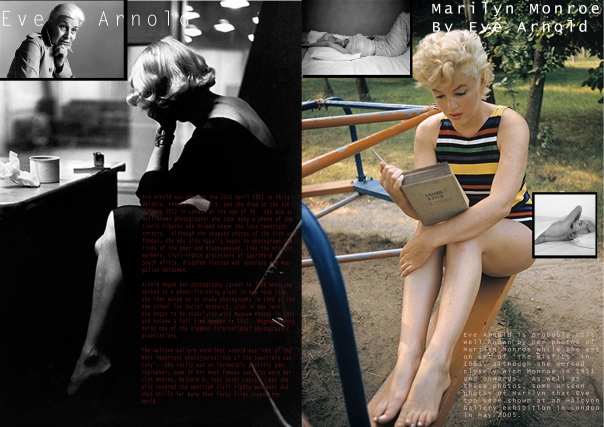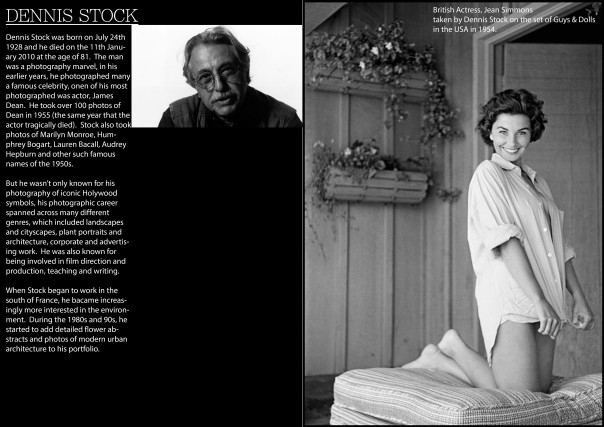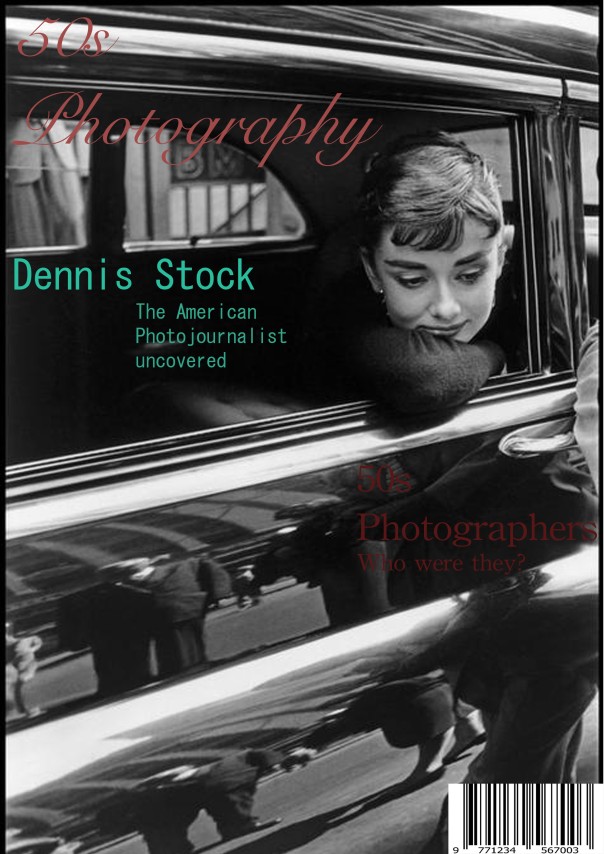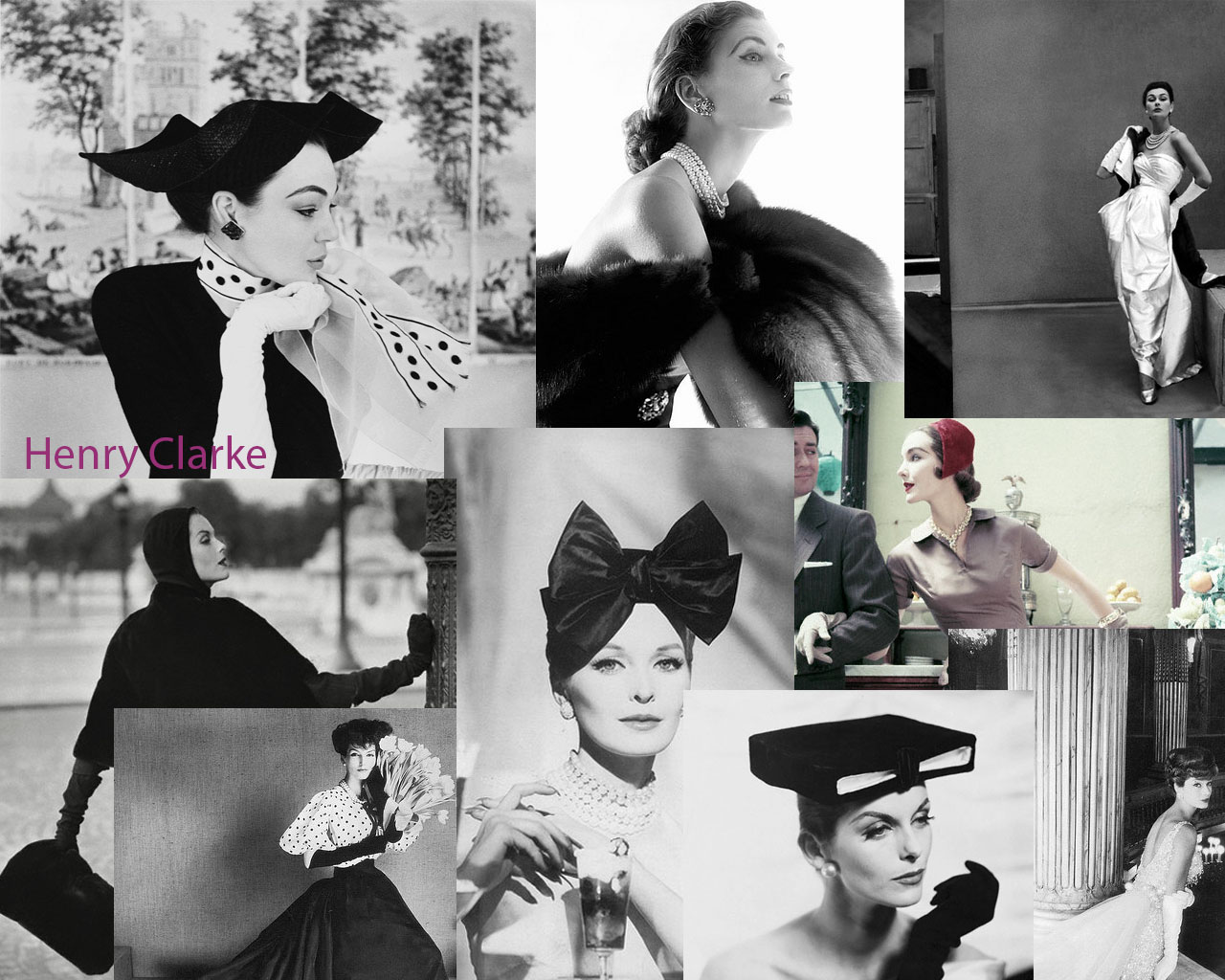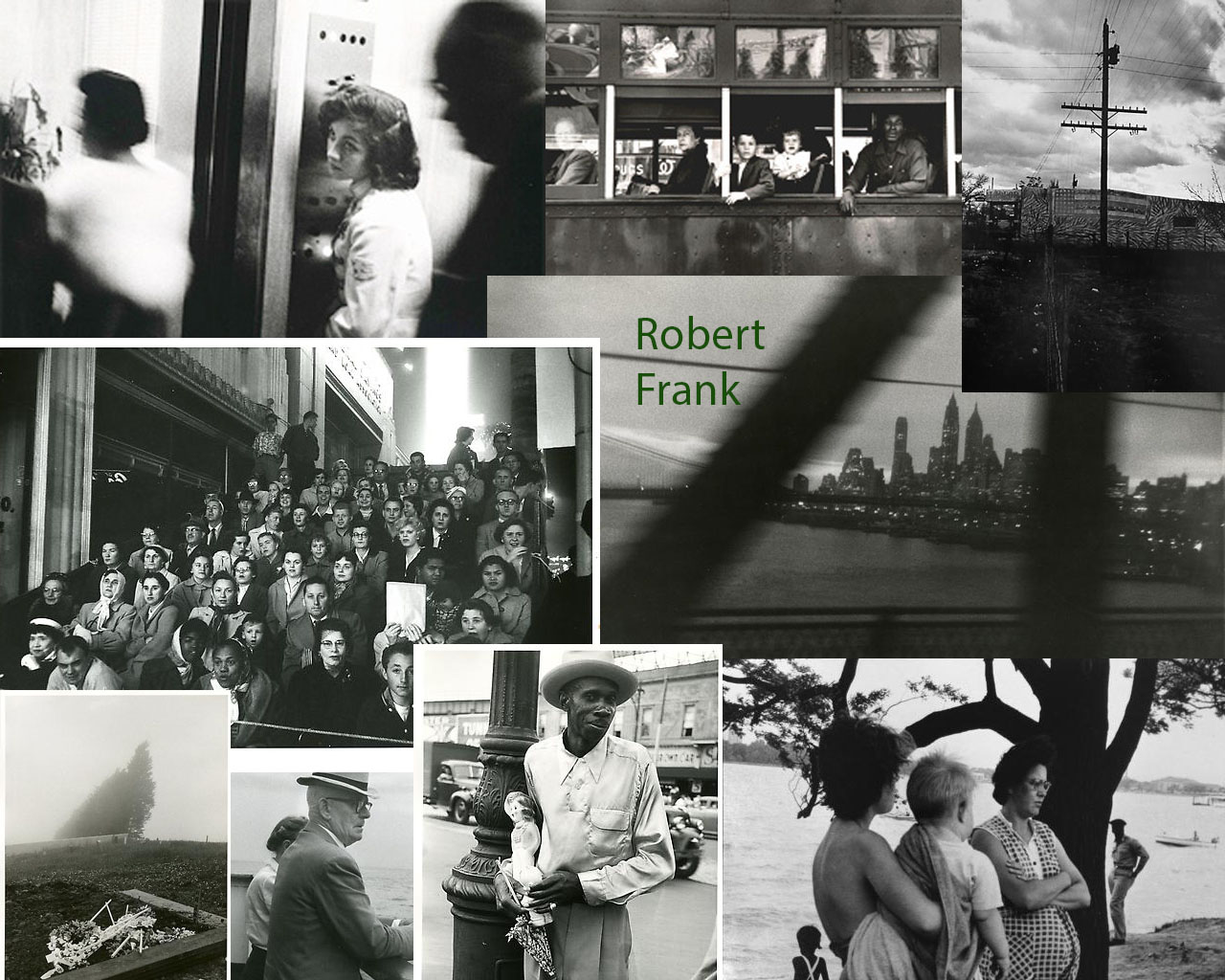Robert Frank
Robert Frank was born on the 9th November 1924 in Zürich, Switzerland, he is one of American photography’s most influential figures. He is also an important figure in American photography and film. His most notable piece of work is a book entitled The Americans, published in 1958; this book earned him comparisons to a modern-day Alexis de Tocqueville. Frank’s book, The Americans, inspired countless photographers across all photographic styles, but he especially appealed to documentary and street photographers.




Vivian Maier
Vivian Maier was born on the 1st February 1926 in New York City and died on the 21st April 2009 in Chicago, Illinois. She was 83 years old. She spent most of her childhood in France and when she moved back to the US, she spent forty years working as a nanny in Chicago. During her time as a nanny, Maier took over 100,000 photos, mostly of people and Chicago’s cityscapes, although she did also travel and photograph things worldwide. Despite taking all of these photos, most of them were undeveloped and all remained unknown until John Maloof, a Chicago historian and collector discovered them in 2007. After Vivian Maier died, her photos started to receive critical acclaim, they have been exhibited in the U.S., Britain, Germany, Norway, Belgium, France, and multiple other countries. Vivian Maier’s photographs are predominantly street scenes in Chicago and New York during the 1950s and the 1960s. “An article in The Independent said “the well-to-do shoppers of Chicago stroll and gossip in all their department-store finery before Maier, but the most arresting subjects are those people on the margins of successful, rich America in the 1950s and 1960s: the kids, the black maids, the bums flaked out on shop stoops.””




Eve Arnold
Eve Arnold was born on the 21st April 1912 in Philadelphia, Pennsylvania, U.S. and died on the 4th January 2012 in London at the age of 99. She was a widely known photographer, who photographed many of the iconic figures who helped to shape the late twentieth century. Although she snapped these photos of famous people, she was also equally happy to photograph the lives of the poor and dispossessed “migrant workers, civil-rights protestors of apartheid in South Africa, disabled Vietnam war veterans and Mongolian herdsmen.” Arnold began her photography career in 1946 when she worked at a photo-finishing plant in New York City, she then moved on to study photography in 1948 at the New School for Social Research, also in New York. Eve began to be associated with Magnum Photos in 1951 and became a full time member in 1957. Magnum Photos being one of the biggest international photographic associations.
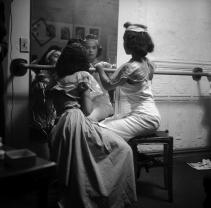
Dennis Stock
Dennis Stock was born on July 24th 1928 and he died on the 11th January 2010 at the age of 81. The man was a photography marvel, in his earlier years, he photographed many a famous celebrity, onen of his most photographed was actor, James Dean. He took over 100 photos of Dean in 1955 (the same year that the actor tragically died). Stock also took photos of Marilyn Monroe, Humphrey Bogart, Lauren Bacall, Audrey Hepburn and other such famous names of the 1950s. Stock also set up a film production company in 1968 called Visual Objectives Inc., and made several documentaries under the company.



Henry Clarke
Born in Los Angeles, in 1918, Clarke was one of the 1950s most prominent fashion photographers. His first step into the fashion world was working as a window dresser for I. Magnin, a luxury fashion and specialty goods. In 1946, Clarke moved to New York and took a temporary job as a background and accessorising assistant at the Vogue studios there. During his time at Vogue, he had the opportunity of observe the different styles of famous photographers such as Cecil Beaton, Irving Penn and Horst P. Horst.
Clarke became fascinated with photography and subsequently enrolled on a course for it at the New School for Social Research. He was able to learn how to combine the fantasy of fashion with the energy of photo-reportage, he also taught himself how to use the twin-lenses Rolleiflex camera, ultimately realising that the future of photography depended on using much smaller and more adaptable cameras.
By the middle of the 1950s, Henry Clarke was working exclusively for Vogue magazine (but not before taking time away from Vogue to become a freelance photographer). The photographs he captured often caught the elegance and sophistication of the modern woman: that being young, lively, carefree and seductive. He worked with the most beautiful models of the time such as Suzy Parker, Ann Sainte Marie and Bettina. Clarke also took celebrity portraits of many famous women like Coco Chanel, Sophia Loren, Anna Magnani, and Maria Callas. He also photographed many other famous women of the time, such as the Duchess of Windsor, the Empress of Thailand and Robin Duke.
Links used to find information
Robert Frank’s “The Americans”: Timeless Lessons Street Photographers Can Learn
http://en.wikipedia.org/wiki/Robert_Frank
http://www.vivianmaier.com/gallery/street-3/#slide-1
http://www.vivianmaier.com/gallery/street-3/#slide-5
http://www.vivianmaier.com/gallery/self-portraits/
http://www.vivianmaier.com/gallery/self-portraits/#slide-13
http://en.wikipedia.org/wiki/Vivian_Maier http://en.wikipedia.org/wiki/Dennis_Stock
http://www.magnumphotos.com/C.aspx?VP3=CMS3&VF=MAGO31_9_VForm&ERID=24KL53ZKDJ
http://www.blog.jewelryaccessories.com/fashion-photographers/375-henry-clarke.html
http://www.independent.co.uk/news/people/obituary-henry-clarke-1347153.html




